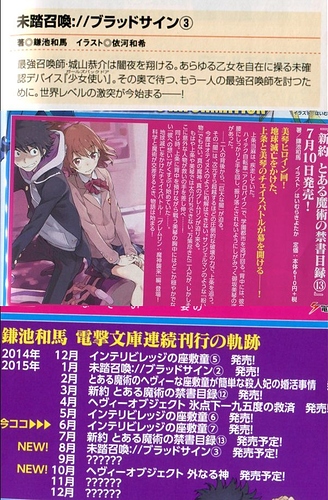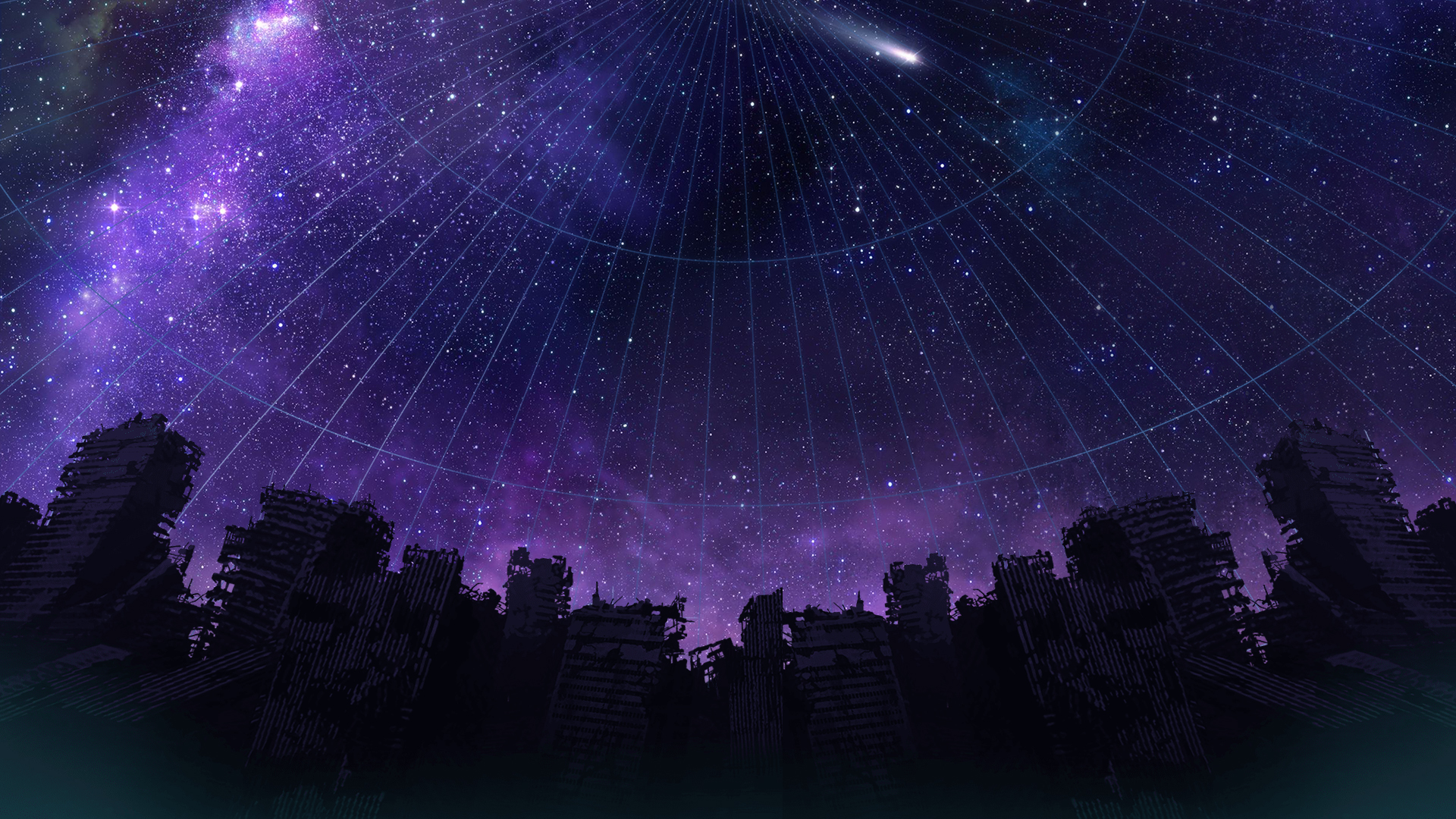Truly an interesting article, but one I’m going to have to disagree with solely because it depends on what you expect from Raildex as you walk right in. Do you want a nice, casual experience that’s fun to the eye with some nice comedy sprinkled in? Index and Railgun anime are just what you need.
Are you perhaps interested in something a bit deeper, something that really gets your brain going into how deep all of this could possibly get? Index anime still passes, but the Railgun anime should be shunned in favour of the manga.
Or are you perhaps the type who likes to understand and analyse the character’s very thoughts according to what canon dictates? You can watch the Index anime as a nice entertainment since it does its best within the medium’s limitation, but the light novels will be a must first. And remember: there is no such thing as a Railgun anime.
That said, I’m not going to argue that reading the Index light novel is only a must if you want to truly understand all of the subtleties in the series. Even though the Index anime takes a step back in terms of depth in favour of a more shounen-like approach, it still does a decent and fulfilling job, for all that it has to deal with, at being an enjoyable and faithful watch for those who can’t be arsed (or simply don’t have the time) to read that insane amount of novels (OT + NT + SS + Extra).
I really wouldn’t say the same for Railgun, though, because it screws up the most fundamental parts of the characters in favour of mindless comedy when that was never its orientation, and even blatantly contradicts canon for the sake of its own nonsense. It feels like it was made more to please the people that were making it than the people who’re watching it and in that regard, I would simply recommend reading the manga first and seeing then anime second for a more casual experience if you’re curious as to what’s all the controversy about… assuming you don’t lose your mind at the sheer difference between the two experiences.
Now, another thing in this article I have a problem with is how Index and Railgun are presented, so I’ll be addressing these under spoilers in case people don’t want to get spoiled/have to read so much.
[spoiler]My first problem is the “skipability” of early Old Testament.
Let’s start with the Index Arc. Though it may seem that way, the Index Arc doesn’t actually serve as an example of what the rest of the series will be like . Once you get a good hang on the universe, it actually serves the purpose of both introducing the setting and introducing us to the inherently flawed character that is Kamijou Touma.
It establishes his uglier sides born from his self-loathing, insecurities and regrets. It shows a Touma who’s willing to give up and had to force himself to keep on going, even then still pretending that he was never the one who did anything (as evidenced by his speech to Stiyl and Kanzaki).
The end of that arc rewards the courage he had with an ultimate sacrifice and outcome, the death of the old Touma and the birth of the new Touma, who’s a blank state riddled with anxiety in retards to his memory loss that’ll fuel the rest of Old Testament until he realises that he doesn’t need his old, unknowingly cynical and highly flawed self to keep his current one going. Index Arc is the difference between the Touma who was willing to give up when told there was no hope, and the Touma who’d never even think that things are hopeless
And that’s why Deep Blood is an important arc (admittedly not as important as the Sisters Arc in that regard, but I’ll get to it), despite how boring it may appear at first. It serves as the starting ground of the new Touma who’s trying his best to fit in a world that only asks for his old self (as shown by him having to keep appearances around everyone he meets in this volume, save for Aisa) and his complex feelings about eventually coming to terms with his memory less.
Aureolus Izzard is meant to represent what could have been had Touma been “another person who failed to save Index”, and to give him the assurance needed to continue his lie by showing the difference between those who failed and him, who succeeded, and showing him that the fact that Index still remembers and wants to be with him isn’t something he can throw away.
This leads us into Radio Noise, an arc that is much more important to Touma than it is to Mikoto, believe it or not (hence why it’s important to watch/read both versions and not just Railgun S, which is a very poor adaptation of the manga form tainted by Nagai’s lack of understanding of the more subtle aspects of character development in that arc), and something that should absolutely not be skipped if you don’t want to see Touma as yet another shounenprota.
The Sisters Arc marks the first point in the story where Touma can act true to his current self. I mean sure, he’d known Mikoto before his memory loss, but it’s clear here that finding that out didn’t put the same amount of pressure on him as when he found out Index knew his old self. Their banter is similar to before his memory loss, but Mikoto never actually made him think “oh shit, I’m not who she wants me to be better pretend otherwise” like Index. Where it was obvious to him that Index longed for his old self, Mikoto, on the other hand, is someone he could just at his most natural around and not have to overthink his every word to keep his secret.
His will to protect the Sisters and Mikoto from the cruel fate that awaits them isn’t something that’s forced onto him by ideals he used to follow before, either, such as when Stiyl approached Touma to save Aisa because “hey you did save Index after all that right hand of yours sure is helpful”. None of that shit here. Touma doesn’t want to see Mikoto get hurt, and he sure as hell doesn’t want to see the Sisters dead, so screw the “strongest” in Academy City, he’s getting his hands dirty to protect them and Imagine Breaker (if you ignore the keikaku he wasn’t even aware of anyway) had nothing to do with anything.
The Sisters Arc marks when Touma starts protecting others because he wants to, and not because he’s obliged to by how people viewed his old self. That’s when he truly adopts the ideals he holds tight during all of OT (and NT, but that’s a lot different and would require an entire post dedicated to it) and when he establishes the everyday life of the new Kamijou Touma. This Arc is important to Mikoto because it teaches her of her blindness to the truths behind Academy City, the city she spent nearly her entire life in, but it’s also important to Touma because it establishes Mikoto and Imouto as the fundamental gears in how his everyday life functions even if he doesn’t see the latter that often.
That’s where he also learns that it’s fine to do things for his own sake, and not have to live for others solely because they would “miss” the old Touma if he were to reveal the truth (which is a theme really accentuated on when Mikoto finds out the truth in the Acqua arc).
Both sides of the Sisters Arc complement each other because it’s an arc meant to be the turning point of both protagonists, and I can’t fathom ever recommending one over the other.[/spoiler]
[spoiler]Secondly, the Railgun anime.
Now, I’m not going to go on a crusade against whoever enjoys it, but if people truly want to understand what Railgun is like and who the characters truly are, then the anime is a must-skip until the manga has been read. The anime doesn’t show as much insight into the character’s heads as it likes to think it does, it merely focus on superficial aspects such as “four girls hanging out” at the cost of understanding canon material (even openly contradicting it at times).
In the anime, Mikoto is made out to be a NAKAMA BADASS a la shounen-genre whereas the manga takes the time to establish her as a cocky, self-confident young girl who simply let all the praise and power get to her head because everyone always went on about how great she was. Where the anime teaches her she can do anything with her friends, the manga showcases and teaches her of her shortcomings and natural flaws as a human being.
Kuroko is made out to be a hyper-jealous hyper-lesbian hyper-weirdo in the anime, whereas the manga actually showcases her true care for Mikoto (such as covering her with a blanket after she fell asleep complaining about Touma, only slightly muttering in displeasure whereas the anime has her blowing unreasonable fuses at the slightest things) and how she’d put anything aside for her happiness which is a theme shown in the Remnant Arc that the Railgun anime displays poorly.
The anime aims to be a show about everyday life in a city of supernatural, whereas the manga aims to show the darker and much unpleasant aspects of such a highly advanced city which is a theme Kamachi favours much more than any normal day scenario.[/spoiler]
I could keep on going on and on using a volume/arc basis, but I’ll cut it here to avoid breaking anyone’s scrolling wheel. My point here is that early OT is actually where Kamachi shines the brightest, solely because most of what happens prior to Invasion Arc is nearly all development for Touma’s sake. If you look closely, even the anime reflects those important aspects of the novels as much as it can within its limitaitons… shame the Railgun anime doesn’t even bother to try and show that brilliance.
This wall may be unrelated to most of what was written in your blog post, Aspi, but while Raildex isn’t a franchise meant to be simple in the first place, it’s up to the viewer/reader to decide what experience they want to gain out of the series which is why I feel it’s important for them to know what they’re missing depending on how they decide to approach the franchise.


